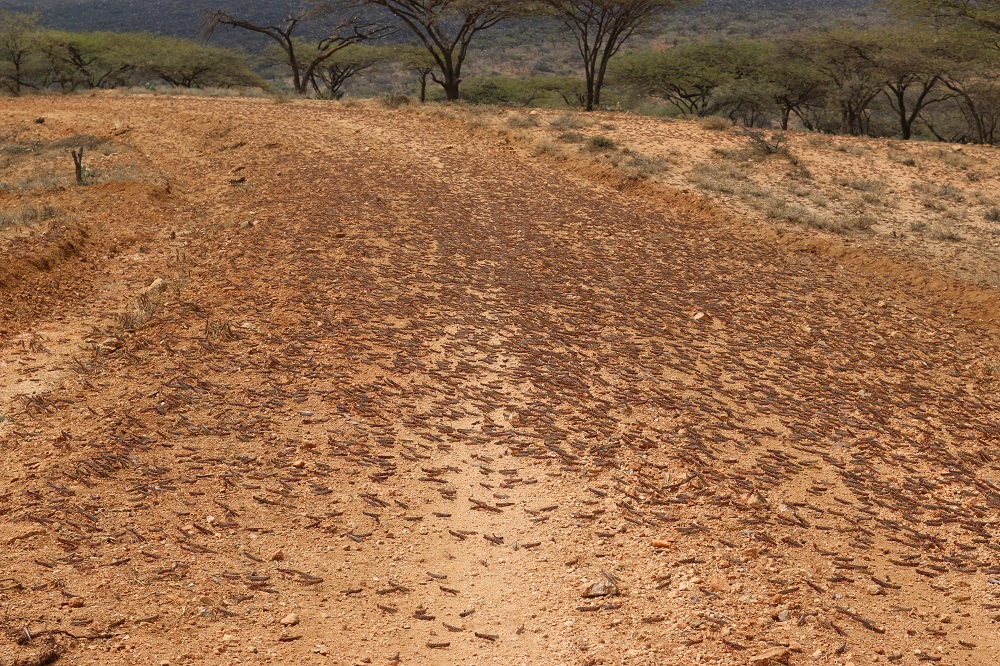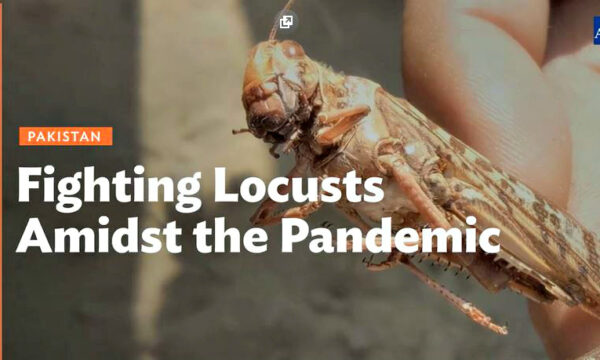
CABI South Asia is hosting a series of webinars under the Food and Agriculture Organization of the United Nations (FAO) Technical Cooperation Programme which has recently turned the focus on the scourge of the desert locust (Schistocerca gregaria).
The desert locust is arguably the most destructive agricultural pest. During 2019 and 2020, the changing weather created conditions that are favoured by the desert locust for rapid reproduction and migration and led to the pest spreading through the Horn of Africa, East Africa, Arabian Peninsula, South West Asia and West Africa.
It is estimated that over 25 million people in Ethiopia, Kenya, Somalia, South Sudan, Uganda and Tanzania faced acute food insecurity in 2020 due to the desert locust plague.
Locust threat
The programme, entitled ‘Coordinative Surveillance and Early Warning Response for sustainable management of transboundary pests,’ stems from a letter of agreement which was signed by CABI and the FAO in May to formulate a harmonized strategy for fighting the transboundary pests which post a major threat to India, Pakistan and other countries in South Asia.
As part of this, a series of webinars are being held to help devise, validate and deploy more environmentally-friendly solutions to tackle the desert locust and fall armyworm (Spodoptera frugiperda) which pose a severe risk to local, regional and national food security as well as the livelihoods of millions of smallholder farmers.
The first webinar in the series has already taken place with Dr Keith Cressman, Senior Locust Forecasting Officer, FAO, who talked about the challenges in managing desert locust effectively. He said the current upsurge was initiated by two cyclones in the Empty Quarter of South Eastern Arabia during 2018 and from there it spread to South West Asia (and brought under control in 2020) and the Horn of Africa (where it continues).
He emphasized on the importance of desert locust forecasting for their effective management. He added that the very latest satellite technologies are used to monitor rainfall, soil moisture, green vegetation, and to help predict rainfall up to six months in advance – thereby forecasting the scale, location and timing of locust migration and breeding on a country-by-country basis. Furthermore, during the past two years, more than 15 new innovations have been developed and integrated into FAO’s Global Desert Locust early warning system in order to improve survey, control, reporting, forecasting and early warning.
Biological option
Dr Belinda Luke, CABI’s Global Team Leader, PlantwisePlus, also spoke about the BioSuccess App – a tool based on modelling locust death from mycoinsecticides which was developed with the National Agro-Tech Extension and Service Center (NATESC) as part of a European Centre for Medium-Range Weather Forecasts (ECMWF) funded project. See also the news story ‘BioSpace project provides early warning system for locust and fall armyworm pests in China and Laos.’
Dr Luke also highlighted how the biological product Green Muscle™ – created by CABI and produced and marketed by Éléphant Vert – is now being used in Africa to help fight desert locusts. The product is based on a specific isolate of a fungus called Metarhizium acridum which only attacks locusts and grasshoppers, effectively stopping them in their tracks. See also the news story ‘Green Muscle providing strength against devastating locusts in the horn of Africa.’
Drone technology
The next webinar will take place at 2pm (India Standard Time) on October 5 featuring Dr Ivan Rwomushana, Senior Scientist, Invasive Species Management at CABI, who will talk about ‘Drone technology for the management of desert locusts: perspectives from Africa.’

Dr Rwomushana will talk about how CABI and Astral-Aerial have partnered to pilot the use of drones to control the desert locust. The technology works by equipping Unmanned Aerial Vehicles (UAVs), or drones, with specially-designed and calibrated spraying equipment that enables mapping and precision spraying.
This pilot is evaluating the benefits and efficiency of using drone technology as a complementary spraying method to manage locusts, including its effect on other beneficial insects and the environment.
In the future, drone technology could be adapted for deployment of Green Muscle™ against hopper bands (a cohesive mass of young desert locusts) for sustainable control of future generations.
The drones will also be used to conduct post spraying mapping and ground sampling to determine the extent of desert locust eradication from spraying operations. Critical data on locust roosting behaviour on different crops and agro-ecologies will guide high precision targeting of the drone spray activities.
You can find out more and sign-up for the webinar here.
Additional information
Main image: desert locusts on road (Credit: CABI).
News story and project page
See also the news story ‘CABI joins forces with FAO to tackle desert locust and fall armyworm pests in Asia Pacific region’ and project page ‘Drones for desert locust control in East Africa.’
Zoom recording of previous webinar
You can see a recording of the first webinar featuring Dr Cressman and Dr Luke here. Enter the password 2^!gkru9 when requested.
Related News & Blogs
CABI shares expertise in drone management of insect pests at Entomology 2023
CABI has shared its expertise in drone management of insect pests at the Entomology 2023 conference which was hosted by the Entomological Society of America (ESA). The conference, which took place in person at the Gaylord National Resort & Conventi…
8 November 2023




